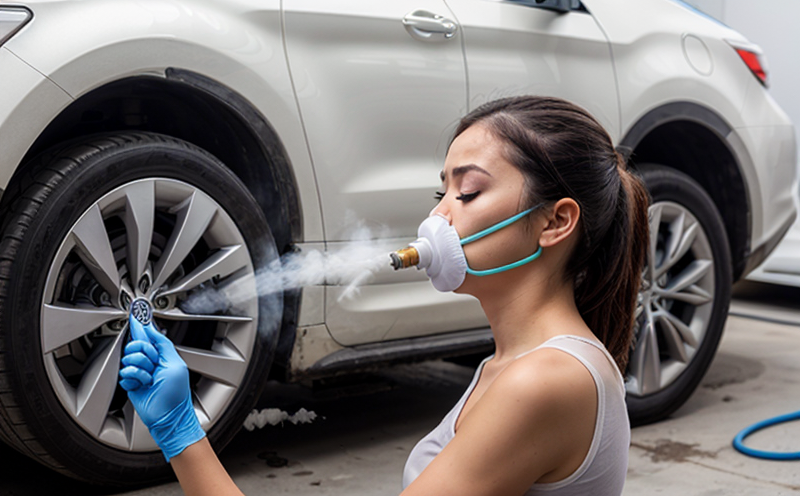ISO 18562 Inhalation Biocompatibility Emission Testing for Medical Devices
The ISO 18562 standard provides a comprehensive approach to ensuring that medical devices are safe and biocompatible, minimizing the risk of adverse effects when inhaled. This is particularly important for respiratory devices such as ventilators, nebulizers, and oxygen concentrators, which come into direct contact with the patient's airways.
The inhalation biocompatibility testing outlined in ISO 18562 aims to assess whether a device emits substances that could cause irritation or harm if inhaled by patients. This is achieved through both static emissions testing (testing the device when it is not operating) and dynamic emissions testing (testing the device during operation).
The process involves several steps, starting with careful specimen preparation. The medical device under test must be cleaned thoroughly to remove any surface contaminants that could affect the results of the emission tests. Once prepared, the device is placed in a specialized chamber where it undergoes both static and dynamic testing.
During static emissions testing, the device remains inactive while the air surrounding it is sampled for potential volatile organic compounds (VOCs), particulate matter, and other contaminants that could be released into the environment. This helps identify any off-gassing or outgassing materials that might pose a risk to patients.
Dynamic emissions testing, on the other hand, simulates real-world usage conditions by operating the device under controlled conditions. This allows for the detection of emissions that occur during normal operation, such as when the device is turned on and off, or when it is in use with connected accessories like tubing or filters.
The results of these tests are analyzed using highly sensitive analytical instruments capable of detecting even trace amounts of harmful substances. If any contaminants are found to exceed specified limits set by ISO 18562, the device must undergo further refinement and retesting until all emissions meet the biocompatibility criteria.
Understanding the importance of this testing is crucial for healthcare facilities and manufacturers alike. By adhering to ISO 18562 standards, these organizations can ensure they are providing safe, reliable medical devices that do not pose unnecessary risks to patients.
Why It Matters
The importance of ISO 18562 cannot be overstated when it comes to the safety and well-being of patients. Inhalation biocompatibility testing ensures that medical devices, particularly those used in respiratory care, do not release harmful substances into the air that could cause irritation or exacerbate existing conditions.
- Reduces risks associated with volatile organic compounds (VOCs) and particulate matter.
- Maintains patient safety by minimizing exposure to potentially hazardous materials.
- Ensures compliance with international standards, enhancing global market access for medical device manufacturers.
In healthcare settings, the use of devices that meet ISO 18562 requirements helps prevent adverse events and improves overall patient outcomes. For manufacturers, adherence to these standards is essential for maintaining a strong reputation in the industry and ensuring their products are safe for clinical use.
Applied Standards
| Standard Reference | Description |
|---|---|
| ISO 18562-1 | General requirements for the assessment of inhalation biocompatibility. |
| ISO 18562-2 | Emission testing under static conditions. |
| ISO 18562-3 | Emission testing under dynamic conditions. |
| ISO 18562-4 | Evaluation of the biocompatibility of emissions. |
The ISO standards provide a detailed framework for conducting inhalation biocompatibility and emission testing, ensuring that all aspects of the test are standardized and repeatable. This consistency is critical for producing reliable results that can be trusted by regulatory bodies and healthcare providers.
Why Choose This Test
- The ISO 18562 standard offers a rigorous approach to ensuring the safety of medical devices, particularly those used in respiratory care.
- It provides clear guidelines for both static and dynamic emissions testing, covering all potential sources of harmful emissions.
- Compliance with these standards enhances global market access and builds trust with regulatory bodies and healthcare providers.
- Avoids the risk of product recalls due to non-compliance with international safety regulations.
- Ensures that patients are exposed to only safe and reliable medical devices, reducing the likelihood of adverse events.
By choosing ISO 18562 inhalation biocompatibility emission testing, manufacturers demonstrate their commitment to patient safety and regulatory compliance. This not only protects their reputation but also ensures they remain competitive in a global market where quality and reliability are paramount.





